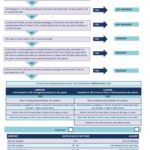Here we explain the statutory rules that determine UK tax residence for individuals.
The original Statutory Residence Test (SRT) rules came into force with effect from 6 April 2013, to determine UK tax residence for individuals for the purposes of:
- Income Tax
- Capital Gains Tax (CGT)
- Inheritance Tax (IHT)
- Corporation Tax
The rules do not apply for National Insurance purposes.
This flowchart may help you to decide whether or not you are a UK resident for a particular tax year.
Non-UK Resident
You are not resident in the UK for a tax year if:
- you were resident in the UK in one or more of the previous three tax years, and you are present in the UK for fewer than 16 days in the current tax year; or
- you were not resident in the UK in all of the previous three tax years, and you are present in the UK for fewer than 46 days in the current tax year; or
- you carry out what is effectively full-time work overseas [see definition A below]; or
- you die during a tax year, spend fewer than 46 days in that tax year in the UK, and were resident in the UK for neither of the two preceding tax years; or
- you die in the tax year and would have been treated as meeting the ‘overseas work’ test if the conditions were altered to take into account the death and you were a UK resident in neither of the prior two tax years.
UK Resident
You are resident in the UK for the tax year if:
- you are present in the UK for 183 days or more in a tax year; or
- you have a UK home for a period of 91 consecutive days or more (of which at least 30 days must fall in the tax year), you spend at least 30 days in that home in the relevant tax year, and during this 91-day period you have no overseas home, or have one or more homes overseas and are present in each of these overseas homes for fewer than 30 days during the tax year in question; or
- you carry out what is effectively full-time work in the UK [see definition B below]; or
- you die during a tax year, were resident in the UK for each of the three preceding tax years under one of the above automatic residence tests, and had a home in the UK at the date of death unless you also had a home overseas and spent a sufficient time there (which is either at least 30 days or at some time on every day from the beginning of the tax year until your death).
If you meet both the automatic UK residence and automatic non-UK residence tests, you will be treated as a non-UK resident for the purposes of the SRT.
If you do not fall into either of the above categories your status will depend on the number of ‘sufficient ties’ that you have with the UK in combination with the number of days you are in the UK. The combination differs according to whether you are an ‘arriver’ or a ‘leaver’ under the provisions of the SRT.
Arrivers
If you were not resident in all of the three tax years preceding the year under consideration, you are treated as an ‘arriver’ for the purposes of the SRT. The following ties may be relevant to your residence status, if they occur at any point in the tax year:
- your family [see definition C below] is resident in the UK;
- you have accommodation available to you in the UK [see definition D below] and make use of it during the tax year;
- you carry out work in the UK [see definition E below];
- you spent 90 days or more in the UK in either of the previous two tax years (see definition F below).
These ties are combined with days spent in the UK to determine your residence status as follows:
| When non-resident throughout the three prior tax years | ||||
| Number of days in the UK in the tax year | 1 or No UK ties | 2 UK ties | 3 UK ties | 4+ UK ties |
| Fewer than 16 days | NR | NR | NR | NR |
| 16 to 45 days | NR | NR | NR | NR |
| 46 to 90 days | NR | NR | NR | R |
| 91 to 120 days | NR | NR | R | R |
| 121 to 182 days | NR | R | R | R |
| 183 days plus | R | R | R | R |
Leavers
If you were a resident in one or more of the three tax years immediately preceding the tax year under consideration, you will be treated as a ‘leaver’ for the purposes of the SRT.
This can result in seemingly paradoxical situations; for example, someone who has arrived in the UK and completed their first tax year of residence here is treated as a leaver in the following year for the purposes of the sufficient ties tests even if they remain UK resident and do not intend to leave the UK at that time.
The following ties may be relevant to your residence status if they occur at any point in the tax year, namely:
- your family [see definition C below] is resident in the UK;
- you have accommodation available to you in the UK [see definition D below] and make use of it during the tax year;
- you carry out work in the UK [see definition E below];
- you spent 90 days or more in the UK in either or both of the previous two tax years (see definition F below);
- you spend more days in the UK in the tax year than in any other single country (see definition G below).
These connection factors are combined with days spent in the UK to determine residence status as follows:
| When resident at any time in the three prior tax years | |||||
| Number of days in the UK in the tax year | No UK ties | 1 UK tie | 2 UK ties | 3 UK ties | 4+ UK ties |
| Fewer than 16 days | NR | NR | NR | NR | NR |
| 16 to 45 days | NR | NR | NR | NR | R |
| 46 to 90 days | NR | NR | NR | R | R |
| 91 to 120 days | NR | NR | R | R | R |
| 121 to 182 days | NR | R | R | R | R |
| 183 days plus | R | R | R | R | R |
Day of presence in the UK
You will be treated as being in the UK on any day when you are in the UK at midnight at the end of that day.
However, this is subject to a ‘deeming’ provision which applies in particular circumstances. This deeming provision counts days where individuals have been present in the UK as days of residence, even when they are not present in the UK at the end of the day.
The deeming rule applies to individuals who have at least 3 UK ties in the tax year in question, have been present in the UK for more than 30 days without being here at the end of the day, and would be treated as a ‘leaver’ for the purposes of the tests, ie resident in the UK for at least one of the previous 3 tax years.
If these conditions are met, all days when that individual is present in the UK above the 30-day threshold will be treated as a day of residence regardless of whether the individual is present in the UK at the end of the day. This deeming provision does not apply to those who are working ‘sufficient hours’ overseas.
Days spent in the UK due to exceptional circumstances may not count, but the definition of what counts as exceptional circumstances is very limited. Exceptional circumstances are not taken into account for all tests. The number of days which may be spent in the UK due to exceptional circumstances without being counted as days of presence will be limited to 60.
The 60-day limit was not extended in respect of the COVID-19 pandemic, but HMRC did provide some guidance which is summarised here.
A day will not count as a day of UK presence if you are merely travelling from one country to another but overnight in the UK on your way. During your time in the UK, you must not engage in any activity substantially unrelated to your passage through the UK e.g. meeting with friends or a cinema trip.
Split years
The tax year can be split into periods of residence and non-residence in certain circumstances, when someone comes to, or leaves, the UK part way through a tax year. This prevents some individuals from being taxed as if they were resident for the parts of the year before they came to the UK or after they left.
The rules, in eight statutorily defined cases, treat a tax year as being split into periods of residence and non-residence if individuals:
- leave the UK to take up full-time work overseas, or leave the UK as the partner of someone who does so
- cease to have a home in the UK (ie leave to live overseas)
- start to have a home in the UK only
- come to the UK to take up full-time work
- cease full-time overseas work, or are the partner of someone who does so
- start to have a home in the UK
The split-year treatment only applies for years in which an individual is a UK resident under the SRT. If an individual is not a resident for a tax year under the SRT, then split-year treatment does not apply.
Split year treatment does not apply to individuals acting in the capacity of personal representatives, but can apply to individuals acting as trustees of settlements in limited circumstances.
A tax year is not treated as split where an individual’s residence status changes due to changes in the number of connection factors such as the arrival or departure of family members.
These flowcharts may help you to decide whether or not the split-year treatment applies to you in your year of arriving in or leaving the UK:
Arrivers Flowchart
Leavers Flowchart
Anti Avoidance
The rules seek to counteract the risk of individuals creating artificial short periods of non-residence, during which they receive a large amount of income (which accrued during periods of UK residence) free of UK tax and then bring the income back into the UK tax-free.
There is an anti-avoidance rule for some forms of investment income along the lines of the capital gains tax rule (which charges gains that arise during a period of ‘temporary’ non-residence – one including fewer than 5 tax years (but years in this instance are taken as 12 month periods rather than complete tax years) – where the individual has been resident in 4 out of the preceding 7 years).
In particular, it applies to dividends paid by closely controlled companies that reflect profits that have built up during a period of residence and which are then taken out during a short period of non-residence.
It would not apply to all types of income that are received when a person is non-resident. For example, it would not apply to earnings from employment or self-employment or to normal types of regular investment income, such as bank interest or dividends from listed companies.
Definitions
A – Working sufficient hours abroad
You meet this test if you work sufficient hours overseas over the tax year in question, provided you have no significant breaks from work, and are present in the UK for fewer than 91 days in the tax year of which no more than 30 days are spent working for three hours or more in the UK.
You work for a sufficient number of hours abroad if you leave the UK to perform work abroad and are:
- employed abroad under one or more contracts of employment (including consecutive employments) or hold offices where the number of hours you work in a week averages 35 or more; or
- carrying on one or more trades or professions wholly abroad where 35 hours of work per week or more is undertaken on average.
Separate tests apply to international transportation workers.
A significant break from work is defined as a break of 31 continuous days or more.
The number of hours worked per week is worked out using a five-step calculation. In practice individuals will be faced with an onerous burden of record keeping in order to be able to provide the information which they or their advisers will need, to be able to perform the five-step calculation and apply the test.
Any hours worked overseas on days where more than 3 hours are spent working in the UK are disregarded for the purposes of the five-step calculation.
When you work full-time abroad, no more than 30 working days can be performed in the UK in any one tax year. This limit will be reduced pro rata if you are treated as being not resident for part of a year under the split-year rules. Although you must be present in the UK for fewer than 90 days, this limit will again be reduced pro rata if you are treated as being not resident for part of a year under the split-year rules.
A working day is any day on which three hours or more of work is carried out. If you carry out fewer than three hours of work, the day will not count towards the threshold of 30 working days in the UK. Even if you are not present in the UK at the end of the day, you will still be treated as working in the UK on that day if you have worked in the UK for three hours or more.
Where you work in the UK for fewer than three hours on a particular day, you would be expected to have sufficient records to demonstrate this fact.
B – Working sufficient hours in the UK
You meet this test if you work sufficient hours in the UK as assessed over a 365-day period, with all or part of the 365-day period falling in the tax year in question and have no significant breaks from UK work. Again, a significant break from UK work is taken to be a break of 31 continuous days or more.
You are working sufficient hours in the UK if you are:
- employed in the UK under one or more contracts of employment (including consecutive employments) or hold offices with total combined working hours averaging 35 hours per week or more; or
- carrying on one or more trades or professions in the UK where 35 hours of work per week or more is undertaken on average.
Again, separate tests apply to international transportation workers.
The work must be carried out in the UK over a continuous period of more than 365 days which falls into a tax year (excluding short breaks such as illness or holidays). More than 75% of the total workdays must be days on which you have spent more than 3 hours working in the UK.
Any 365-day period, of which part falls in the tax year, can be considered for the purposes of this test – for example, even if only one day in the 365-day period falls in the tax year, it would still count if the individual spent more than 75% of the total workdays in that period working for more than 3 hours in the UK.
It should be noted that, even if you have worked sufficient hours in the 365-day period to meet the 35-hour average, unless more than 75% of the workdays are spent working 3 hours or more in the UK then the full-time UK work test is not met.
Any days on which you spend more than 3 hours working overseas but also spend time working in the UK are disregarded for the purposes of the 5-step calculation.
C – Family tie
You have family in the UK in a tax year if any of the following apply:
- your spouse, civil partner or someone with whom you are living either as husband and wife or as civil partners is resident in the UK in that tax year or any part of that tax year. This does not include a spouse, civil partner etc who is separated from you under a court order or a deed of separation or where the separation is likely to be permanent; or
- you have children under the age of 18 who are resident in the UK and you spend time with those children (one to one or with others present), or live with them, in the UK, for all or part of 61 days or more during the tax year.
A child will not be treated as being resident in the UK for these purposes if their residence is mainly caused by time spent at a UK educational establishment. This will be when the child spends fewer than 21 days in the UK outside term time, and the child’s main home is not in the UK.
D – Accommodation tie
You have a UK accommodation tie if the residential property:
- is available to be used by you as a place of residence; and
- is available for your use for a continuous period of at least 91 days in the tax year, and
- you spend at least one night in the tax year at that property
Where the accommodation is owned by parents or grandparents, siblings or adult children or grandchildren, you may spend up to 15 nights there without triggering an accommodation tie.
Where there are gaps of fewer than 16 nights between points when the accommodation is available, then it will be treated as available during the gaps. For example, a businessperson based overseas, who stays at the same hotel for fortnightly business trips to the UK, could find themself triggering an accommodation tie.
E – Work tie
Individuals have a work tie if they spend at least 40 days in a tax year working in the UK. The definition of a working day is any day on which more than three hours of work is undertaken. This includes any day where the person is not in the UK at the end of that day.
F – 90-day tie
An individual has a 90-day tie with the UK if they spent more than 90 days in the UK in either or both of the two tax years preceding the relevant tax year.
G – Country tie
An individual meets the country tie criteria if the country in which they are present at midnight on the greatest number of days in the UK.
If they are present in more than one country at midnight on an equal number of days, and one of those countries is the UK, the individual will have a country tie with the UK for that tax year if they do not spend a greater number of days in the tax year in any other country.
Specific advice should be obtained before taking action, or refraining from taking action, on any of the subjects covered above. If you would like advice or further information, please speak to your usual Shipleys contact or one of our specialists on this page.
Copyright © Shipleys LLP 2023

















